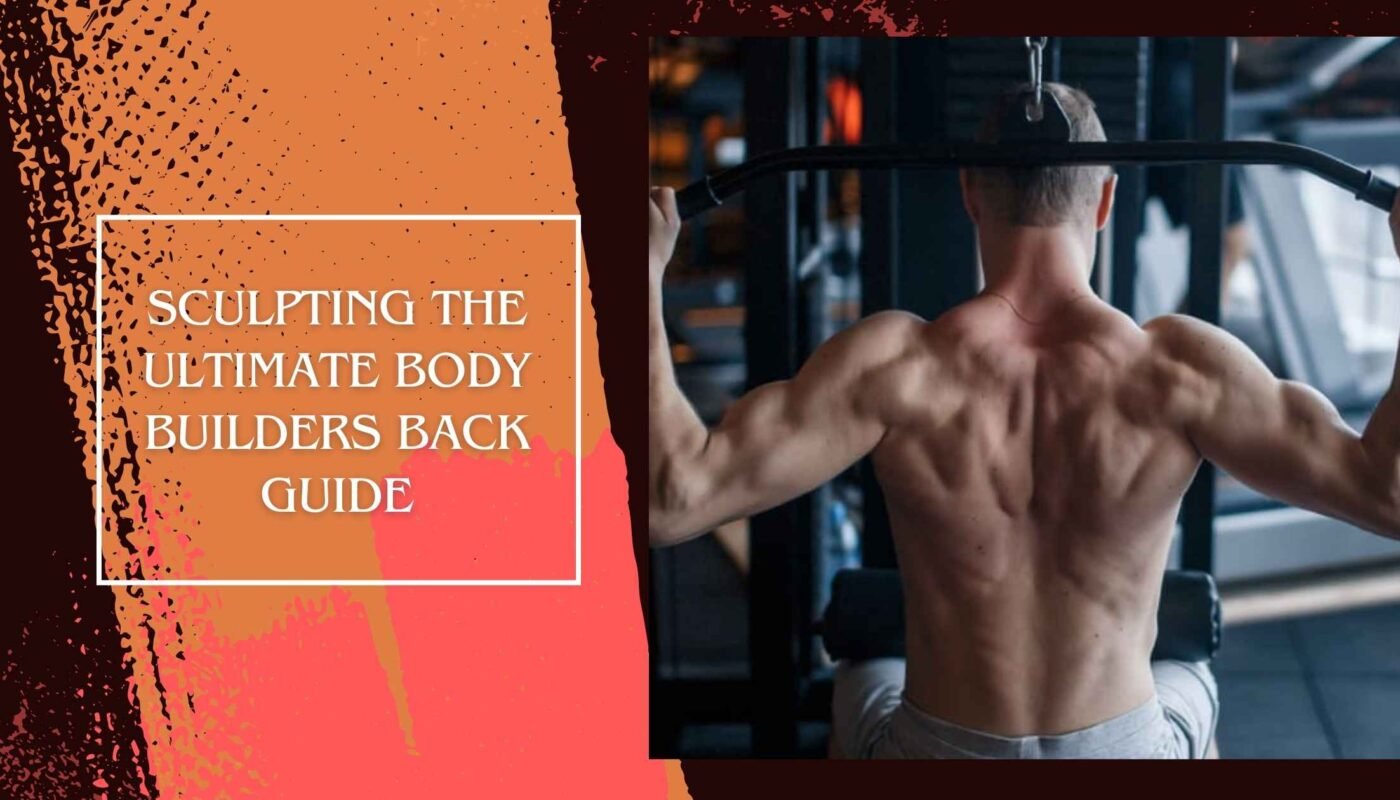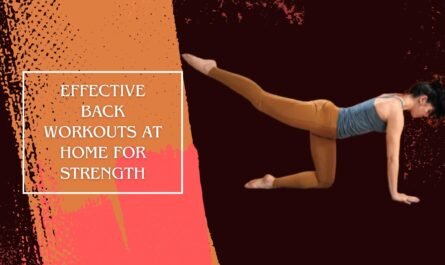Imagine walking into a bustling gym, the sound of weights clanking and your favorite workout playlist playing. You see bodybuilders, each one looking confident and strong. Their backs are wide, defined, and impressive. You feel a surge of motivation, thinking about the potential of your own back.

A strong back is key for many lifts and boosts your overall strength. It’s not just about looking good.
This article will cover how to build the best back for bodybuilding. We’ll look at back anatomy and workout strategies. We’ll cover everything you need to know about building muscle and improving your bodybuilding look. Let’s start this journey to sculpt your ultimate back and improve your bodybuilding skills.
Table of Contents
Why a Strong Back is Essential for Bodybuilders
A strong back is key for any serious bodybuilder. It helps with stability during lifts and improves the overall look of the physique. The importance of a strong back is huge; it affects posture and lifting strength. Bodybuilders focus on back exercises to get that perfect “V-taper” shape, mainly from strong lats.
Back muscles like the latissimus dorsi, trapezius, and rhomboids support and strengthen during workouts. The lats are crucial for shoulder extension and help with the desired width. In competitions, a strong back can make or break a bodybuilder’s success. It looks great when posing, making back training vital for any serious plan.
Working out with exercises like bent-over rows, pull-ups, and seated rows grows muscles and prevents injuries. Spending time on back exercises gives bodybuilders a balanced physique. This balance is key for strength and health, essential for top athletic performance.
Understanding Back Anatomy for Better Training
To improve bodybuilders’ back performance, knowing back anatomy is key. The back has many muscles that are vital for strength, stability, and function. By focusing on these muscles in workouts, bodybuilders can boost their training and see great results.
Key Muscles of the Back
The main muscles of the back are:
- Latissimus Dorsi: This muscle runs from the thoracolumbar fascia to the humerus, helping with arm movements.
- Erector Spinae: These muscles go from the base of the neck to the pelvis, keeping posture stable and supported.
- Trapezius: This muscle has upper, middle, and lower parts. It helps move the head, pull the shoulder blades back, and twist the torso.
- Posterior Deltoids: These muscles help with arm movements, allowing for extension, external rotation, and horizontal abduction.
Impact of Back Strength on Overall Performance
Strong back muscles are crucial for better bodybuilders’ back performance. They help lift heavier weights and keep posture right. Exercises like bent-over barbell rows, deadlifts, and pull-ups work these muscles well, improving strength and looks. Also, focusing on back strength helps with core stability and spinal health.
| Muscle | Function | Key Exercises |
|---|---|---|
| Latissimus Dorsi | Arm movements and stabilization | Pull-ups, High pulls, Bent-over rows |
| Erector Spinae | Spinal stability and posture | Deadlifts, Back extensions |
| Trapezius | Shoulder movements and retraction | Seated cable rows, Shrugs |
| Posterior Deltoids | Arm rotation and extension | Dumbbell flys, Reverse pec deck |

The Role of the Back in Bodybuilding Aesthetics
The back is key to bodybuilding aesthetics. A well-defined back adds depth and dimension, making a physique look better. It helps create a V-taper, which many bodybuilders aim for. This taper makes a bodybuilder look broader and more impressive on stage.
Training the back effectively involves different techniques and exercises. Deadlifts are crucial for building mass. They work many back muscles, adding thickness and strength. Single-arm dumbbell rows and barbell rows also target specific areas, adding to the overall look.
Bodyweight exercises like pull-ups and inverted rows are important too. They improve strength and work the whole body, promoting balanced growth. These exercises help bodybuilders build size and maintain definition, which looks great in poses.
Bodybuilders should do 8-12 reps per set with moderate weights for muscle growth. This rep range is best for building muscle size. Adding eccentric training, where you lift more weight at the end of a rep, can also help grow muscles and improve bodybuilding aesthetics.
| Exercise | Type | Reps | Target Muscles |
|---|---|---|---|
| Deadlift | Compound | 8-12 | Lower back, lats, traps |
| Single-arm Dumbbell Row | Isolation | 8-12 | Lats, rhomboids |
| Pull-ups | Bodyweight | 8-12 | Lats, biceps |
| Inverted Rows | Bodyweight | 8-12 | Upper back, biceps |
Essential Techniques for Bodybuilding Back Workouts
For bodybuilders, effective back training is key to a strong and sculpted physique. Using a mix of bodybuilding workout techniques boosts results. Deadlifts and bent-over rows are great for strength, working many muscles at once.
Good form is crucial in back workouts. It keeps you safe and helps muscles grow. Choose weights that make you feel the muscles working. Doing one back workout a week, like on a Monday or Tuesday, fits well with a balanced schedule.
Slow, steady growth is best. A 20-week plan with five back routines helps muscles adapt. Each routine changes exercises and rep counts. Resting between sets, from 1 minute to 90 seconds, helps muscles recover.
Using different grips and hand positions makes your routine more effective. Single-arm dumbbell rows work each side evenly. Bodybuilding.com’s Exercise Database can help improve these exercises.
Adding these key techniques to your workouts leads to better strength and muscle growth. Remember to use supplements and eat right, as advised, for the best results.
Body Builders Back: Best Exercises for Muscle Growth
Building a strong back takes hard work and focus on both compound and isolation exercises. Compound exercises like deadlifts and barbell rows work many muscles at once. Isolation exercises, like face pulls and lat pulldowns, focus on specific muscles for better shape.
Knowing how to use these exercises can change your bodybuilding journey. It’s all about finding the right mix for your goals.
Compound vs. Isolation Exercises
It’s key to know the difference between compound and isolation exercises for balanced muscles. Here’s a look at each:
| Exercise Type | Description | Examples | Benefits |
|---|---|---|---|
| Compound Exercises | Engage multiple muscle groups simultaneously | Deadlifts, Barbell Bent-Over Rows, Kettlebell Swings | Increase overall strength, muscle mass, and functional fitness |
| Isolation Exercises | Target specific muscles for focused development | Face Pulls, Lat Pulldowns, Dumbbell Single Arm Rows | Enhance muscle definition, correct strength imbalances, and promote aesthetic improvements |
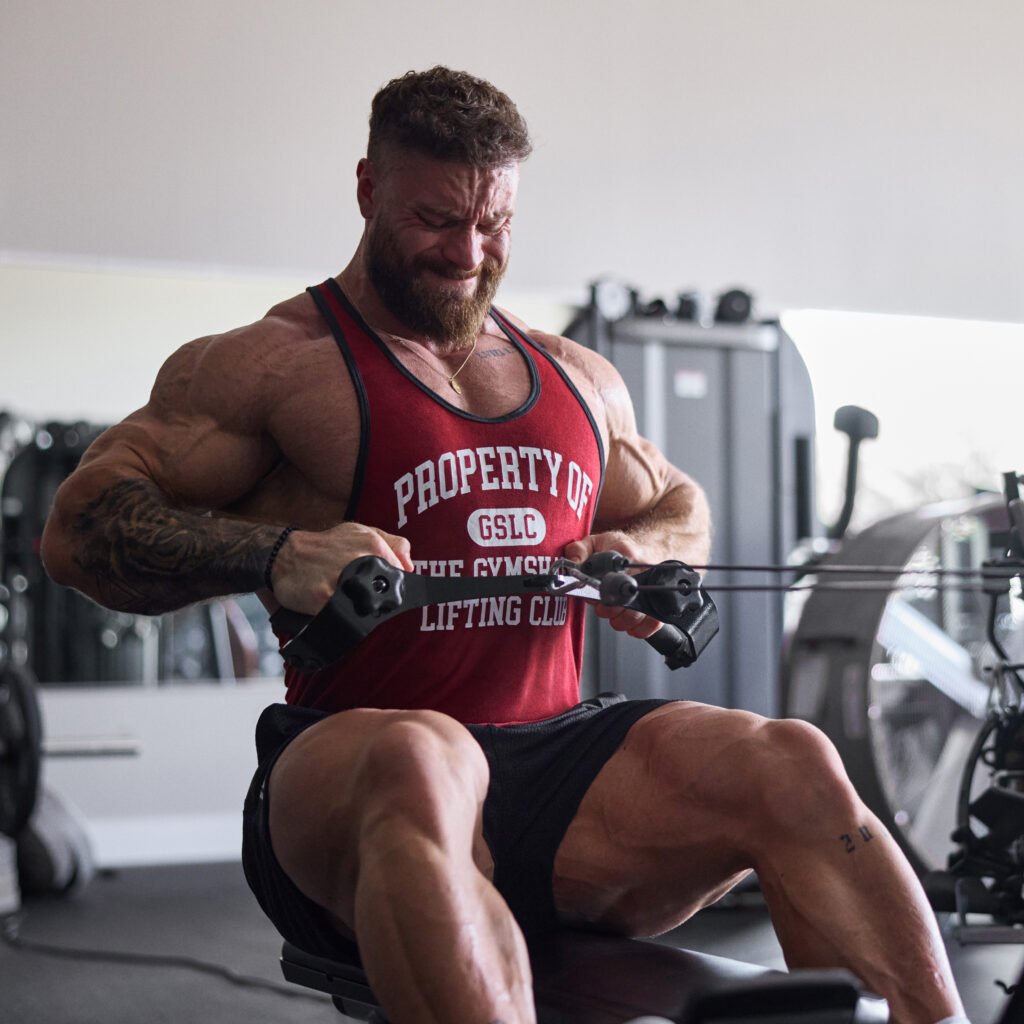
Focus on Form for Maximum Gains
Putting form first in workouts boosts performance and cuts injury risk. Doing exercises right means your muscles work best. This is key in compound exercises where many muscles work together.
Staying focused on form leads to better results. You’ll see more strength and a better-looking back.
Back Workouts for Beginners
Starting a back workout routine is key for new lifters. It helps build strength and improve technique. Basic exercises like pull-ups and seated cable rows are great for beginners.
Simple Routine for New Lifters
A good back workout for beginners should cover different back areas. Here’s a simple routine to start with:
- Pull-ups – 3 sets of as many reps as possible
- Seated Cable Rows – 3 sets of 10-12 reps
- Barbell Rows – 2 sets of 8 reps
- Deadlifts – 3 sets of 5 reps
- T-Bar Rows – 3 sets of 10 reps
This routine helps build back strength and improve technique.
Progress Tracking for Beginners
It’s important for beginners to track their progress. Keep a record of your lifts and increase weights or reps over time. This helps you see your strength grow and keeps you motivated.
Using a training journal is a great way to monitor your back workout progress.
Intermediate Back Workout Strategies
Intermediate lifters can improve their back workouts to grow muscles more. By adding more intensity and volume to their routines, they can focus on their body’s needs and strengths. This makes each workout effective and exciting.
Adding Intensity and Volume
To make intermediate back workouts better, try advanced training methods. Here are some tips:
- Use pyramid sets to increase or decrease weight in each set, engaging more muscles.
- Try drop sets to push your muscles hard by lowering weight after you can’t do more.
- Change your grip in exercises like bent-over rows to work different muscle fibers in your back.
Tailoring Exercises to Your Body
Customizing your workouts can boost your performance and results. Look at these points:
- Find the best exercises for your back’s four areas: upper outer lats, lower lats, middle back, and lower back.
- Do 1-3 different back exercises in each session for a balanced workout.
- Watch how you’re doing and switch exercises if needed, based on how you feel and your results.
| Volume Landmarks | Description |
|---|---|
| Maintenance Volume | Minimum volume needed to keep muscle mass. |
| Minimum Effective Volume | The least training volume for muscle growth. |
| Maximum Adaptive Volume | The best volume for muscle improvement without overtraining. |
| Maximum Recoverable Volume | The highest volume an athlete can handle and still recover from. |
Using these strategies and customizing your workouts will help you build more strength and look better. It’s a great way to keep growing your muscles.

Advanced Back Training Techniques
For those who lift weights, adding high-intensity methods to back workouts can boost muscle growth and performance. This level of training includes supersets and drop sets to increase workout intensity. These strategies make each set a challenge, focusing on form and pushing limits.
High-Intensity Protocols
A workout plan with six exercises is best for muscle growth. It has 20 sets, perfect for those who want to improve their back exercises. Start with a 5-minute warm-up of moderate cardio to get your muscles ready.
Incorporating Supersets and Drop Sets
Here’s an example of a structured workout:
| Exercise | Sets | Repetitions |
|---|---|---|
| Rack Pulls | 3 | 5 |
| Pull-Ups or Lat Pulldowns | 4 | 10-12 |
| Barbell Rows | 4 | 6-8 |
| Dumbbell Rows | 3 | 10 |
| Cable Rows | 3 | 12-15 |
| Dumbbell Pullovers | 2 | 10-15 |
This routine is meant for once a week, but experienced lifters can do it more often. Each exercise targets different intensities, using 70% to 90% of one-rep max (1RM). Keeping proper form is key, especially for tricky moves like deadlifts. Focusing on form and muscle engagement can lead to great results with these techniques.
Nutrition Tips to Fuel Your Back Growth
To get the most out of your back growth, focus on a good workout plan and a great diet. The right nutrition for muscle growth helps with recovery and performance. It’s key to eat enough protein, especially if you’re a bodybuilder looking for big gains.
Importance of Protein Intake
Getting enough protein is vital for muscle recovery and growth. The International Society of Sports Nutrition suggests eating 1.4-2.0 grams of protein per kilogram of body weight every day if you’re into intense exercise. If you’re into high-intensity resistance training, you might need up to 3 grams per kilogram. Foods high in protein like:
- Bison – Low atherogenic risk and high protein content
- Fresh lean pork – Approximately 40 grams of protein per cup
- Chickpeas – 14.6 grams of protein per cup
- Almonds – Nearly 29 grams of protein per cup
- Tofu – 12.68 grams of protein per 100 grams
Adding these foods to your diet can help with muscle repair. They’re perfect for anyone focusing on protein intake for bodybuilders.
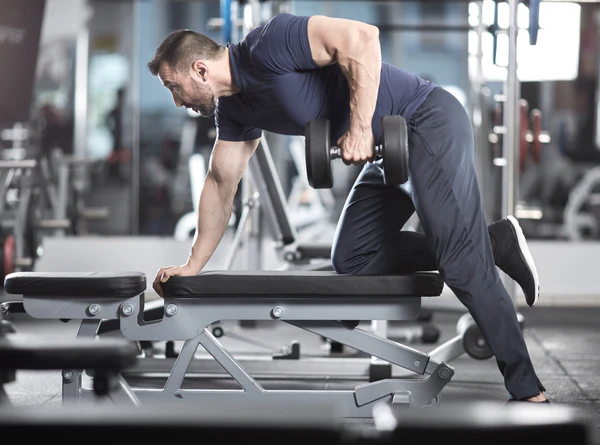
Timing Your Nutrients Around Workouts
When you eat matters a lot for getting the most from your workouts. Eating the right mix of protein and carbs before and after can boost your exercise performance and help with muscle recovery. Here’s what to aim for:
- Pre-workout: Eat a meal with carbs and protein 30 to 60 minutes before exercising.
- Post-workout: Have a snack or meal high in protein and carbs right after your workout to refill your energy.
By eating at these times, bodybuilders can improve their nutrition for muscle growth. This helps with better recovery and energy levels, which is key for back growth.
- 【The Sportsroyals Squat Machine 】 A new trend to have cause traditional squats are too slow to be effective. Combining t…
- 【Butt Lifter】The Sportsroyals perfect home fitness equipment with squat form, shifts the weight back to your glutes, get…
- 【Full Body Workout】The Sportsroyals Squat Machine combines the features of the Row & Ride, making it the ideal for weigh…

- NEW UPGRADED DESIGN — Enjoy efficient training right in the comfort of home with this equipment featuring an innovativ…
- ADJUSTABLE 138LBS WEIGHT STACK — SunHome Home Gym System comes with a 138-pound selectorized weight stack that can be …
- ALL IN ONE — This home gym station can support many different kinds of exercises such as Chest Press, Perfect Pec Stat…
- [2 Exercise modes & Detachable Handles] By changing the connection ways between the hoist buckle and the high strength a…
- [Professional Components] Breakingproof ball design of the cable and heavy-duty alloy buckle can prevent the rope from b…
- [Premium Material] Includes with 70-inches and 90-inches high-strength sheathed cables, provides more cable length optio…

Common Mistakes to Avoid in Back Training
Knowing the mistakes in back training can really help you improve. It’s key to focus on proper form and technique. This helps prevent injuries and helps muscles grow. By avoiding common mistakes, bodybuilders can get better results that last.
Poor Technique and Form Issues
Poor form often leads to back training mistakes, which can cause serious injuries. Many people lift weights too fast, ignoring the need for controlled movements. This quick lifting increases injury risk and doesn’t fully work the muscles.
It’s crucial to pay attention to form in every rep. Doing so maximizes muscle activation and prevents strain.
Ignoring Recovery and Rest Days
Not giving muscles enough rest is a big mistake. Rest days help muscles heal and get stronger. Some think training more often leads to better results, but this isn’t true.
This belief can lead to overtraining, causing muscle breakdown and more injuries. Finding a balance between intense workouts and rest is key. It helps muscles grow sustainably and keeps you healthy.
How to Track Progress for Back Development
Tracking progress is key for bodybuilders wanting a strong back. By using the right methods, you can see muscle growth and tweak your training. Setting realistic goals will make your journey to a stronger back and better looks smoother.
Setting Realistic Benchmarks
It’s crucial to set goals you can reach in bodybuilding. Here are some benchmarks to help you:
- Regularly check how much you can lift.
- Use progress photos to see muscle definition.
- Keep an eye on your strength over time.
- Talk about your goals with a coach or training buddy.
- Change your goals based on your wins and challenges.
Methods for Measuring Back Gains
Bodybuilders use different ways to track their back growth. Here are some:
- Fitness Logs: Keep detailed records of your workouts, like exercises, weights, and reps.
- Body Measurements: Track waist, chest, and hips to see changes in your body shape.
- Body Fat Composition: Check body fat percentages along with muscle growth to see your changes.
- Progress Photos: Take pictures every week to see your progress visually.
Using these methods will help you keep track of your back progress and muscle growth. Stay consistent and regularly check your progress and results. Adjust your training and diet as needed to keep moving towards your goals.
| Tracking Method | Frequency | Purpose |
|---|---|---|
| Fitness Logs | Every workout | Document exercises and weights |
| Body Measurements | Weekly | Monitor growth in key areas |
| Body Fat Composition | Bi-weekly | Track muscle gain versus fat gain |
| Progress Photos | Weekly | Visualize physical changes over time |
Personalizing Your Bodybuilders Back Program
A personalized back program is key for reaching your muscle goals. It lets you tailor your routine to fit your body type, boosting strength and performance. By knowing your body’s unique shape, you can focus on exercises that work best for you, making your workouts more effective.
Understanding Your Body Type
Body type training helps you understand your physique’s unique traits. These traits affect how you respond to exercises. There are three main body types: ectomorphs, mesomorphs, and endomorphs. Each type has its own way of gaining muscle and losing fat. Knowing your type helps you train more effectively.
- Ectomorphs: Lean and find it hard to gain weight. They do well with a program that includes lots of exercises and compound movements to help muscle growth.
- Mesomorphs: Naturally muscular and easily gain or lose weight. They do best with a mix of strength and muscle-building workouts.
- Endomorphs: Have a rounder body shape and gain fat easily. This group needs a program that focuses on losing fat while keeping muscle.
Adjusting Your Program as You Progress
As you get better, changing your back program is crucial. Regular checks on how you’re doing and how you recover are key to getting better. Focus on exercises like back squats, deadlifts, chin-ups, and barbell bench press to build back strength and muscle. Being creative with your program keeps you motivated and leads to steady progress.
Here are some key tips for improving and adjusting your training:
- Start with four workout days a week, especially if you’re new, to avoid getting too tired.
- Change up the exercises you do each week to focus on different muscles.
- Make sure your workouts include both lower and upper body exercises for balance.
The Mental Game: Staying Motivated in Your Back Training

Staying motivated in back workouts can be tough. Bodybuilders often hit plateaus and face setbacks. It’s key to build mental toughness to keep improving and succeeding. Setting goals and using mental strategies can boost your dedication and resilience.
Overcoming Plateaus and Setbacks
Plateaus can be tough, but it’s not just about physical effort. Mental strategies are key to staying motivated. Visualizing success, practicing mindfulness, and being grateful can strengthen your mind. Doing exercises that help you bounce back also helps. Plus, learning to delay instant rewards can improve self-control, which is crucial.
Planning Goals for Continuous Growth
Setting clear, SMART goals is the first step to good training. Having short and long-term goals gives you direction and keeps you on track. Tracking your progress boosts motivation and helps you stay focused on your goals. Deadlines can also push you to work harder and achieve your goals. By always setting and adjusting your goals, you keep pushing yourself to get better, even when things get tough.
| Strategy | Description |
|---|---|
| Visualization | Imagining the end result of your goals can enhance motivation. |
| Mindfulness | Practicing mindfulness improves emotional control and resilience. |
| SMART Goals | Setting Specific, Measurable, Achievable, Relevant, and Time-bound goals aids clarity. |
| Gratitude | Cultivating gratitude reduces anxiety, positively impacting mental health. |
| Regular Tracking | Monitoring progress promotes motivation and adherence to your training regimen. |
Supplementation Options for Enhancing Back Gains
Choosing the right supplements can boost your efforts to get stronger back muscles. When added to a good diet and workout plan, these supplements help with muscle growth and recovery. Here are some top supplements for recovery and muscle health.
Best Supplements for Recovery
Recovery supplements are key for fixing and strengthening your muscles after exercise. Here are some top recovery options:
- Whey Protein: Great for after workouts, whey protein helps your muscles repair and grow faster.
- Branched-Chain Amino Acids (BCAAs): Taking 100 milligrams per kilogram of body weight can cut down muscle soreness and damage.
- Glutamine: Eating 20-30 grams a day, with 10 grams right after working out, helps muscles heal.
- Creatine: Using it long-term can increase strength and performance by 5-15%. Start with 0.3 grams per kilogram of body weight.
- Fish Oil: 2 grams a day can reduce muscle soreness and help you recover faster.
Vitamins and Minerals for Muscle Health
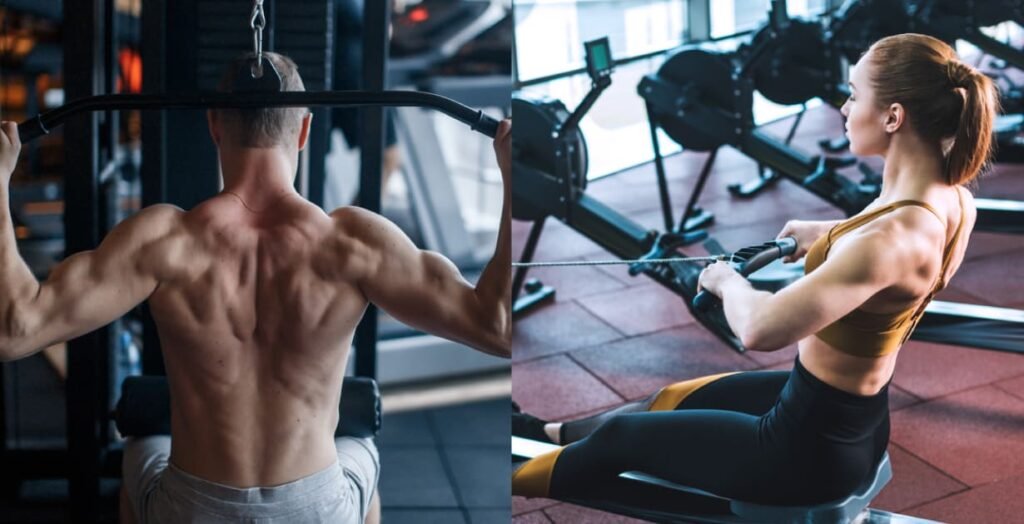
Adding vitamins and minerals is also important for muscle health and performance. Don’t forget these key nutrients:
- Vitamin D: Crucial for muscle function and overall health.
- Calcium: Important for muscle contractions and keeping bones strong.
- Magnesium: Helps control muscle contractions and makes energy.
- Caffeine: Taking 150-300 milligrams before workouts can boost your performance.
- Citrulline Malate: A 8-gram dose before exercise can make your workouts more effective.
Inspiring Stories from Pro Bodybuilders
Building a strong back takes dedication and many lessons, shown by pro bodybuilders like Richard Knight and Guy Cisternino. Richard has been competing since 1986 and talks about the importance of commitment. He trained for 39 years, showing the need for both physical and mental strength.
His wins at the Southern California Bodybuilding Championship prove hard work and good nutrition pay off.
Guy Cisternino also has a powerful story of coming back after two shoulder surgeries. His comeback shows the power of resilience in bodybuilding. After a tough recovery, he got back on stage, proving mental strength is key.
His story teaches the value of taking care of yourself while chasing bodybuilding dreams.
These stories show that with determination, you can beat any challenge. They remind us that bodybuilding is more than just lifting weights. It’s about getting better, recovering well, and eating right.
These athletes inspire others and break down barriers in the sport. Their stories are for anyone, whether you’re just starting or have been competing for years. They show the rewarding path of building muscle and getting ready for competitions.

